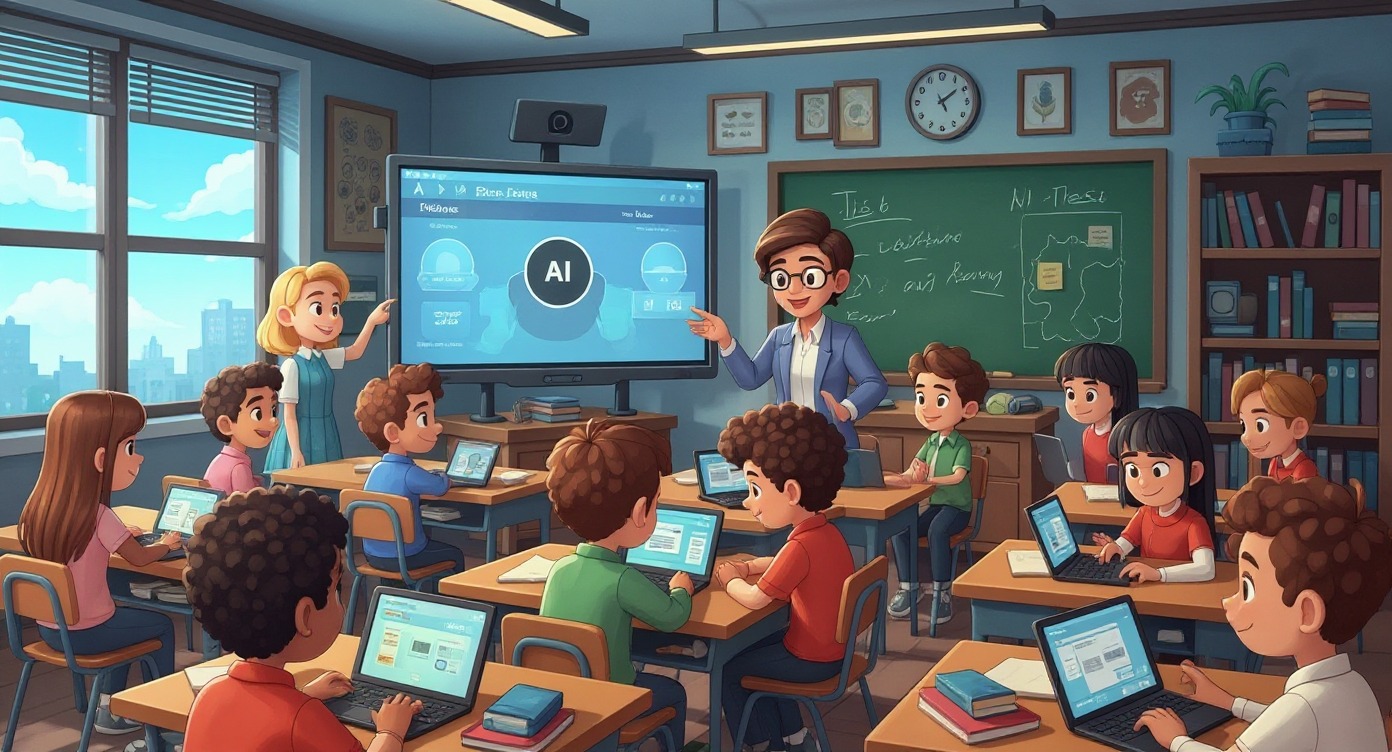Charting the Future: A Principal’s Guide to Implementing Student-Centered AI Education in K–12 Schools
In an era marked by the accelerating convergence of technology and pedagogy, the integration of artificial intelligence (AI) into the educational landscape has transitioned from speculative possibility to operational imperative. As principals, we are uniquely positioned at the intersection of leadership, instructional vision, and systemic transformation. Our task is not merely to introduce AI essay grader for teachers into our schools, but to do so with purpose, precision, and a deep commitment to equity and ethical engagement.

Reframing the Imperative: Why AI Education Matters
Artificial intelligence is not just a tool; it is a paradigm-shifting force that is already reshaping the contours of civic life, labor markets, and social interaction. If we are to equip students with the intellectual agility and moral compass required to thrive in this rapidly evolving terrain, we must embed AI literacy into our educational DNA. According to the Kapor Foundation, AI education must be culturally responsive, equity-centered, and attuned to the ethical implications of data, design, and decision-making. This is not simply a STEM initiative—it is a comprehensive humanistic project.
Strategic Leadership: Laying the Groundwork for Implementation
-
Align AI Integration with Institutional Mission and Vision
Any initiative as transformative as AI education must be tethered to the foundational aims of the district. Consider, for example, the Anaheim Union High School District’s mission to graduate socially conscious, civic-minded learners. AI literacy—when thoughtfully deployed—amplifies these goals by fostering digital citizenship, ethical discernment, and interdisciplinary inquiry.
-
Develop a Robust AI Education Framework
The first substantive step in this journey is the development of a district-wide AI framework. This document must move beyond mere technical competencies to interrogate the philosophical, societal, and humanistic dimensions of AI. A cross-functional task force—including teachers, administrators, students, and community voices—should examine AI’s role in shaping epistemologies, labor systems, and civic identities. The framework must be living, iterative, and inclusive of all grade levels and demographic groups.
-
Prioritize Sustained Professional Development
Teachers must be capacitated—not merely trained—to engage meaningfully with AI concepts. This involves structured professional learning pathways, internal learning communities, and partnerships with organizations such as aiEDU. Educators must understand not only how to use AI tools but why—situating AI within broader conversations about equity, agency, and epistemology.

Pedagogical Innovation: Infusing AI Across the Curriculum
-
Cross-Disciplinary Integration
AI should not be confined to computer science electives. Rather, it ought to permeate disciplines—from English to Social Science, from the arts to mathematics. For instance, ninth-grade Career and Technology courses can introduce students to foundational AI principles, while English teachers can explore algorithmic bias through persuasive writing prompts. In Social Studies, students might examine the historical precedents of technological disruption and speculate on AI’s future sociopolitical implications.
-
Ethical Anchoring and Equity Focus
Central to our approach must be a sustained interrogation of AI’s ethical landscape. Topics such as surveillance, algorithmic discrimination, intellectual property, and digital sovereignty must be treated not as ancillary topics, but as core curricular content. To that end, we must adopt pedagogical frameworks and instructional materials that foreground social justice and center marginalized perspectives.
The Role of Essay Eye: An AI Essay Grader for Teachers
No AI integration strategy is complete without tools that are both pedagogically sound and scalable. Essay Eye, our AI-powered essay grader for teachers, exemplifies this dual imperative. Unlike opaque “black box” systems, Essay Eye is purpose-built to support teachers and students in the metacognitive act of writing. It offers real-time, criterion-aligned feedback across multiple writing genres—narrative, argumentative, and expository—while remaining transparent, customizable, and educator-guided.
By automating low-level evaluation tasks and providing formative, data-driven insights, Essay Eye liberates educators to focus on higher-order instruction and student conferencing. For students, it serves as a mirror and mentor—offering scaffolded feedback that builds fluency, self-efficacy, and agency. Used effectively, it becomes both a pedagogical tool and an ethical exemplar of what AI should be in the classroom: accountable, supportive, and equity-enhancing.
Engagement, Agency, and Iterative Growth
-
Stakeholder Engagement
Parents, students, educators, and community leaders must be invited into the conversation. Host forums, distribute surveys, and cultivate advisory councils that ensure transparency and inclusivity. AI education cannot be a top-down mandate; it must be a shared journey.
-
Project-Based, Student-Centered Learning
Practical application is essential. Engage students in hands-on projects that expose the inner workings of machine learning models, encourage design thinking, and prompt ethical reflection. Activities like Google’s “Quick, Draw!” game are useful entry points, but students should also be encouraged to develop AI-infused solutions to real-world problems—ideally culminating in capstone presentations or digital portfolios.
-
Continuous Assessment and Reflexivity
As with any educational innovation, we must establish a feedback loop. Regularly gather qualitative and quantitative data from staff and students. Measure not just content acquisition, but shifts in attitudes, curiosity, and ethical awareness. Adjust accordingly. Adaptation is not a sign of weakness—it is the hallmark of instructional integrity.
Anticipating the Inevitable: Challenges and Possibilities
We must also anticipate and plan for friction: concerns about data privacy, resistance to change, the pace of technological development. These challenges are real—but they are also navigable. What we cannot afford is inertia. The future will not wait for our readiness; it will arrive regardless. Our responsibility is to be intentional about how we meet it.

Conclusion: Leadership as Stewardship
Leading AI education in K–12 schools demands more than initiative—it demands imagination, intellectual courage, and moral clarity. As principals, we are stewards of not only our students’ academic growth but of their civic and ethical formation. By embedding AI literacy into the fabric of our schools, investing in tools like Essay Eye—an AI essay grader for teachers—and foregrounding equity and inclusion, we ensure our students are not just users of technology, but shapers of a more just and intelligent world.

